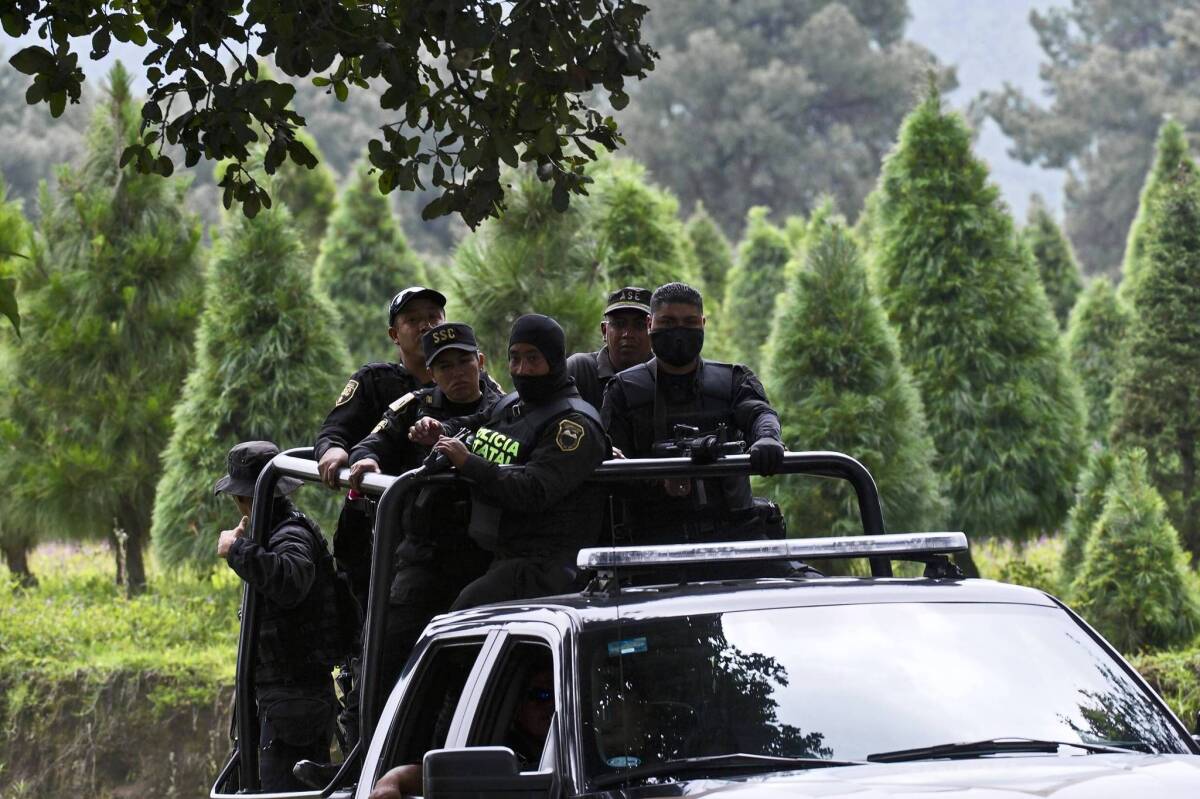Mass grave providing answers in mysterious Mexico kidnapping

- Share via
MEXICO CITY — For three months, the broad-daylight kidnapping of a group of young people from a bar in the heart of Mexico’s capital haunted residents.
How was a mass abduction possible in a city that, it was generally thought, remained relatively free of the most vicious violence stalking other parts of the country?
The mystery appears to be unraveling, but the answers are not comforting.
In a muddy mass grave 25 miles or so east of downtown Mexico City, 13 bodies were exhumed beginning Thursday, along with guns and handcuffs. As of Friday, five were identified as members of the group who went missing from the Heaven bar in the sometimes-fashionable Zona Rosa district on a Sunday morning in May.
Security videos showed the men and women being ushered into several vehicles outside the bar, just a block from Reforma Boulevard, the city’s main thoroughfare, and a short distance from the U.S Embassy. They were never seen again.
On Thursday, government investigators on an unrelated operation to search for illegal guns came across the mass grave near the town of Tlalmanalco, authorities said. A slow exhumation began.
On Friday afternoon, in a hastily arranged news conference in Mexico City, officials with the federal attorney general’s office said five bodies had been identified based on tattoos, dental records, clothing and, for one, a prosthetic device.
A total of 13 bodies were pulled from the muddy pit on a Christmas tree farm, said Renato Sales, a senior prosecutor.
That matches the number of people who vanished after leaving the bar May 26. (Many accounts have listed only 12 victims, but families have said relatives of a 13th missing person never filed a police report.)
The other bodies will be identified through DNA testing, which may take at least another day, authorities said. Several of the corpses were badly decomposed, they said. The grave was covered with cement, asbestos and lime, Sales said.
Distraught relatives who have pushed incessantly for the case to be investigated rushed to the attorney general’s office as the news was being announced, consumed by grief and anger.
“They killed them, they killed them,” wailed Teresa Ramos, the grandmother of missing 16-year-old Jerzy Ortiz, according to journalists who were present. “Every single one of those thugs must fall, one by one.”
Authorities said they suspected that the victims were abducted as part of a battle among rival, small-bit drug dealers. Families insisted their loved ones were not involved with drugs, but all were from the notorious Tepito neighborhood, known for counterfeiting and other criminal activities.
The case has transfixed the country because it challenged the conventional wisdom that this sprawling capital has remained relatively untainted by the kind of grisly bloodshed sweeping much of the country. It has also caused political trouble for Mayor Miguel Angel Mancera, a former top prosecutor who has continued to insist that drug cartels do not operate in the city.
Mass graves of victims, migrants and rival gang members slain by dominant cartel members dot some parts of Mexico, especially closer to the northern and southern borders. But discovering one so close to the national capital was disconcerting for many Mexicans.
Those identified were three men and two women, ages 24 to 33. There were also several teens among the missing.
More to Read
Sign up for Essential California
The most important California stories and recommendations in your inbox every morning.
You may occasionally receive promotional content from the Los Angeles Times.











